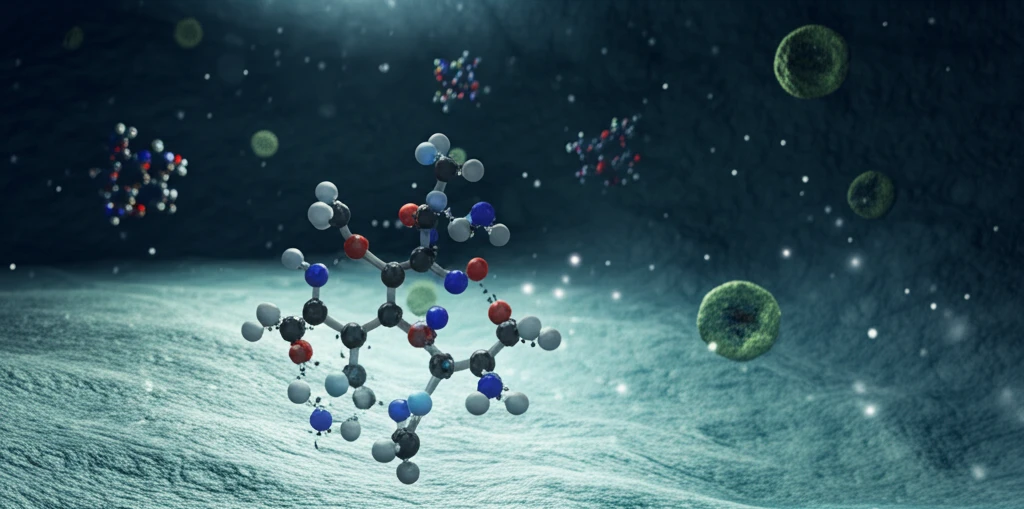
Unlocking the Mystery: How Cyclosporin A Impacts Your Cholesterol and Heart Health
"A comprehensive look at Cyclosporin A (CsA)-induced dyslipidemia, its effects on LDL receptors, and practical strategies for managing cholesterol levels."
Cyclosporin A (CsA), a powerful medication that has been a game-changer for organ transplant recipients and individuals battling autoimmune diseases since its discovery in the 1970s, is primarily known for its immunosuppressive properties. This drug belongs to the calcineurin-inhibitor class, which means it works by suppressing T-cell activation, a critical component of the immune system. However, beyond its well-known benefits, CsA has a less desirable side effect: it can wreak havoc on cholesterol levels.
While CsA is effective in preventing organ rejection and managing autoimmune conditions, it has been linked to the development of hyperlipidemia, a condition characterized by elevated levels of lipids (fats) in the blood. This can increase the risk of atherosclerotic cardiovascular disease (CVD). Studies suggest that up to 60% of transplant recipients may eventually die from cardiovascular-related events, at least partially attributed to CsA treatment. CsA tends to create a more severe lipid and cardiovascular risk profile compared to other calcineurin inhibitors like tacrolimus. CsA dose-dependently elevates plasma lipids, a process reversible upon cessation of CsA therapy. This supports the idea that CsA independently causes hyperlipidemia.
CsA-induced hyperlipidemia is characterized by increased levels of triglycerides (TGs) and cholesterol (Chol) in the blood. Animal and human studies have shown that CsA raises plasma very low-density lipoprotein (VLDL), intermediate-density lipoprotein (IDL), and low-density lipoprotein (LDL) levels, while its effects on high-density lipoprotein (HDL) levels are variable. CsA is also reported to increase proatherogenic small dense LDL (sdLDL)-Chol. This article dives deep into how CsA affects lipid metabolism and the crucial role of LDL receptors, providing actionable insights for those taking the medication.
What Does Cyclosporin A Do to Lipid Metabolism?

Lipid metabolism is a complex process involving multiple organs, enzymes, and the plasma compartment, all intricately linked. Dietary fatty acids are used to synthesize triglycerides (TGs), which, along with dietary cholesterol, are packaged into chylomicrons. These chylomicrons are released into the lymph system before entering the bloodstream. In the circulation, lipoprotein lipase (LPL) hydrolyzes TGs, converting large chylomicrons into smaller remnants. The liver assembles TGs from locally synthesized or circulating fatty acids, packing them into VLDLs secreted as lipoprotein particles.
- VLDL Lipolysis: Lipolysis of VLDL-TGs in the circulation converts VLDLs into IDLs.
- LDL Generation: Further lipolysis via hepatic triglyceride lipase in the liver generates LDLs.
- Remnant Clearance: Clearance of remnant lipoproteins (e.g., chylomicron remnants and LDL) requires hepatic uptake via cell-surface interaction with heparin sulfate proteoglycans (HSPGs), the low-density lipoprotein receptor (LDLr), the low-density lipoprotein receptor-related protein-1 (LRP1), and possibly, the scavenger receptor type-1 (SR-B1).
What's the Bottom Line?
CsA-induced hyperlipidemia remains a significant clinical challenge. Recent studies suggest that impaired LDLr activity facilitates hyperlipidemia after CsA, rather than CsA directly targeting LDLr. Therefore, increasing LDLr levels and activity with statins or PCSK9 inhibitors are vital strategies for enhancing clearance capacity and reducing CsA-induced hyperlipidemia. If you're taking Cyclosporin A, proactive management of your cholesterol levels is key to protecting your heart health.
